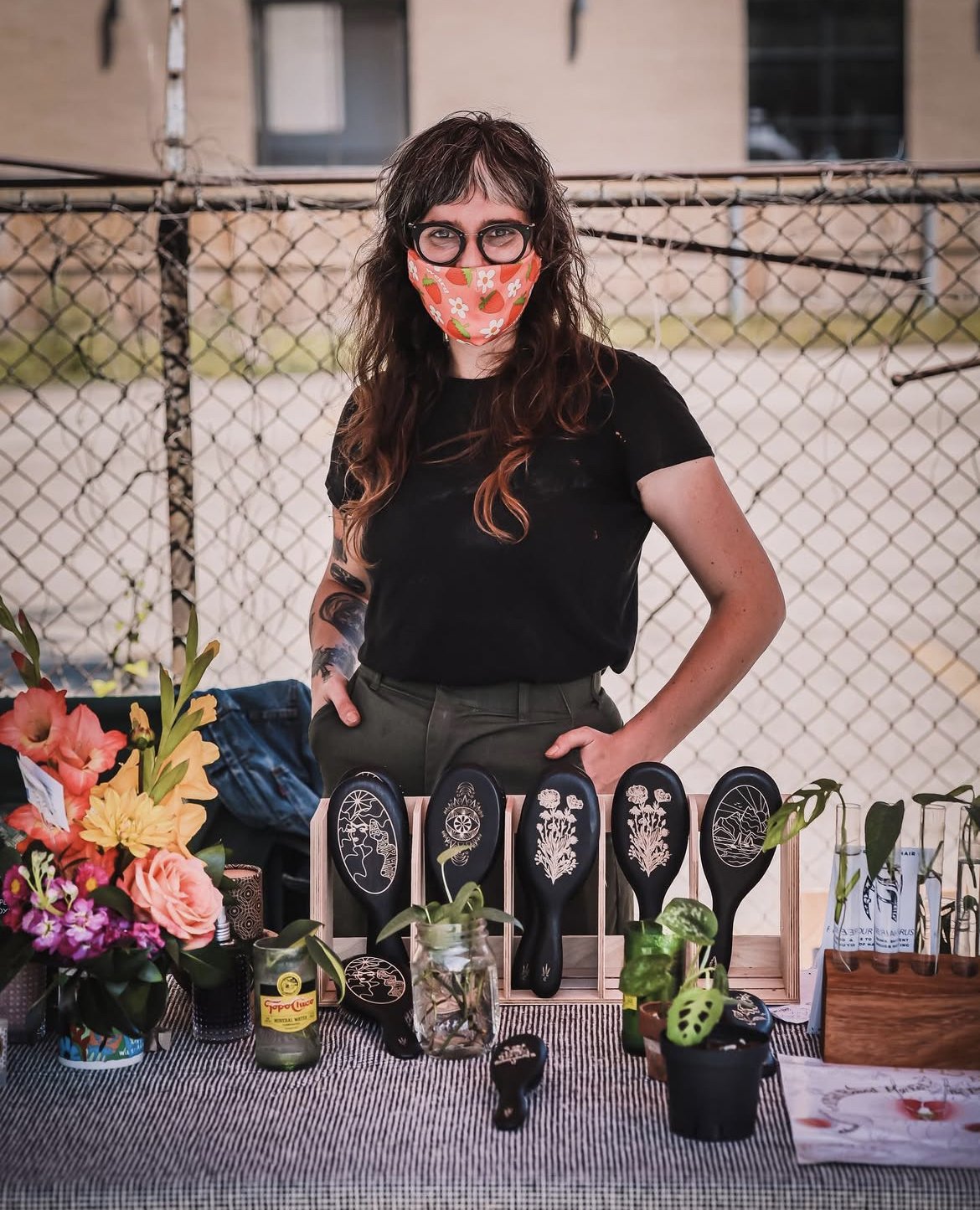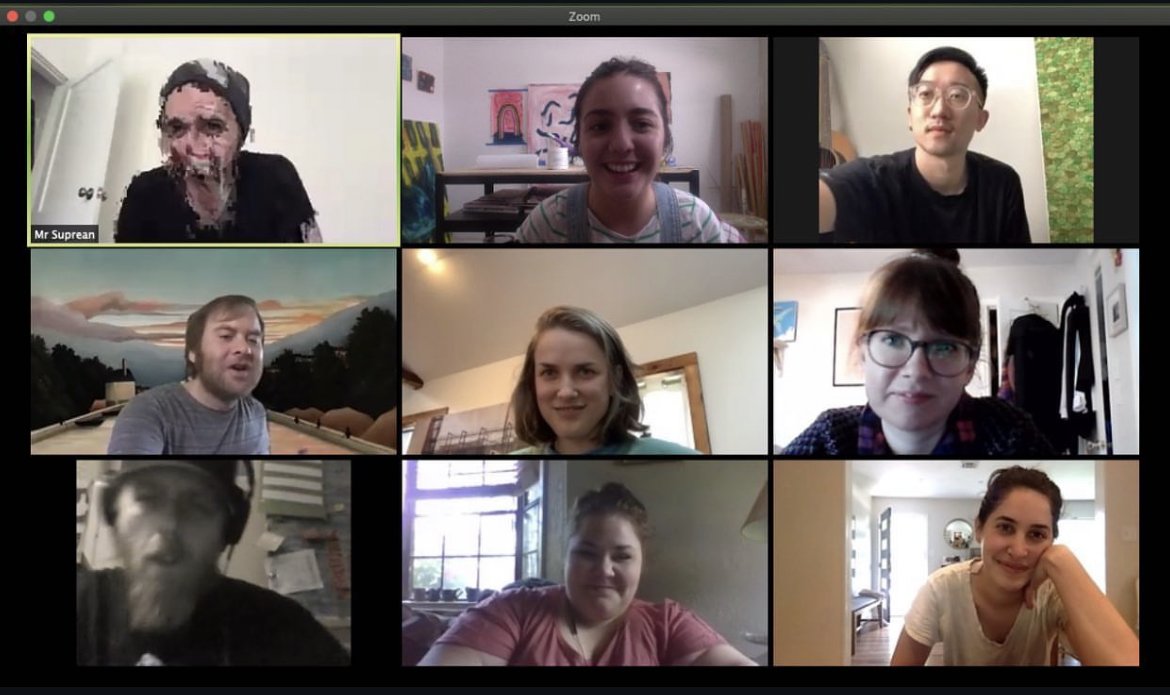New Year, New Art World
It somehow feels like the end of 2019 was only a few months ago, and yet also like 20 years have passed. The pandemic years were rough on many of us. For Flak Magazine, after our launch in 2018, we were reimagining the ways that constructive art criticism could be presented. What forms could it take? What messages could be translated? Then COVID-19 entered the chat. It was a difficult task to write when the world seemed to be falling apart.
For us as individuals and for our fellow creatives, it was a challenging two to four years. The Wizard of Oz-esq curtain was yanked down, revealing to the world how so many of our known systems were flawed or outright damaged. The art world and its inner workings seemed to be one of those systems.
During the housing and financial crisis of 2007-08, many of the galleries in Chelsea shuttered their doors. The ways in which the gallery world short-changed young artists and used them up like batteries to fill their own pockets had backfired. Suddenly, spending $30,000-$40,000 on a newly minted painter didn’t seem so wise. The gallery world in general had to find its footing again and recalculate. It was difficult for experimental spaces to stay afloat. Not because we were running an angle or taking advantage, but because there was no sure financial stability in conceptual art and installation during this crisis.
While the art world and its creatives found new ways to become sure-footed again, the economy slowly began to rebuild. Everyone had a little over 10 years to enjoy the “norm,” if we could call it that. Did we collectively learn from our mistakes of yesteryear? Not so much. Traveling exhibits and nonprofit collaborations helped for-profit entities gain footing. Museums and institutions were attempting to be diverse and changing policies. Perhaps many actually gave a real go at changing, but it was slow coming.
Plant Market Sunday organizer and founder Erin Ramirez, 2021.
Courtesy of Plant Market Sunday.
During the pandemic, we lost so many great establishments, performance spaces, and galleries. We also lost creatives and loved ones to illness or suicide. Locally and within many arts communities, we saw intellectual and creative vacancy as many moved away from the big cities or art meccas to reside more remotely or move back home. From the lack of income, the inability to gather and socialize, and no venues for presenting work, artists and creatives lost purpose and direction. We had to buckle down, hang on tight, and simply try to survive. We had to learn to adapt to a new era. Many artists never left their studios, using their new endless time surplus to create in ways they hadn’t before. Others put a pause on everything to spend time with family or learn a new trade. We also had to find new ways to progress and remain sustainable. Musicians became organic tomato vendors at the farmers' markets, and new media artists sold handmade clothing and furniture. It was a bit of a reimagined renaissance. Not due to creative exploration, but by need and necessity. Nonprofits, museums, and arts institutions held video conferences, meetups, and online lectures. It worked for a time and kept creative juices flowing. It wasn’t enough, but it was the best we had with the mental bandwidth that was left.
As the world slowly started to open up, so did the spaces and venues. Familiar faces were seen once again and even better in person.
It wasn’t until 2022 that I went to an opening that almost felt like a “true opening.” There was once again food and wine, laughing and conversation, along with the general small talk between artists and collectors. It was almost the same. Nothing really seemed to be the same as it had before. Should it be? Likely not. The old familiarities and formalities seemed to be vacant. There were no more true First Thursdays, First Fridays, or nights packed with openings. In fact, with the changing algorithms of social media and the ghost whisper of printed media, there didn’t seem to be a real way to even advertise. Showcards became a suggested method and emails worked enough, but most of us were tired of being on Zoom calls and “online happy hours,” making digital mailing lists exceptionally hit-or-miss. Artists appeared to abandon the gallery system to some degree. It’s not that it wasn’t a necessary system, because those relationships and partnerships are truly important, but it was different. Artists used to be shamed for selling work online or selling too many pieces via social media, but during the pandemic, it was needed to survive.
Crit Club Happy Hour, 2020.
Courtesy of Erika Whitney.
The dynamic had shifted, and it was noticeable. Artists' spaces seemed to reappear and collectives reformed. Creatives had events and openings for the original purpose: to show your work to your peers. White wall spaces were nice but not needed. Apartment shows reappeared. We got used to outdoor spaces, and they proved to be just as meaningful. Experiencing a dance performance as we sat in our cars while illuminating the performers with our headlights was a wild method but necessary given indoor event restrictions. No press releases were needed a month beforehand and the urgency to text all the art critics the day-of didn’t seem to be that important. It was cleansing. It also seemed irrelevant to even advertise the openings, or for that matter, to attend them. Why go to the opening night? Where or what was the urgency? To support the artist? To support the gallery or presenter? Why couldn’t one pop by during the day on a lazy Saturday? To me, it seemed a combination of what used to be social distancing and yet also the lost desire to force socialization. Maybe we spent too much time alone appreciating true connection. We didn’t need to be social butterflies.
Barking Legs Theater, “Drive-In Dances,” 2020.
Courtesy of Barking Legs Theater.
While we all refocused our energies and connected to perhaps a purer form of presenting or creative dialog, we understood that it's okay to slow down. Hustle and flow, but at our own pace, or maybe let's put it off until tomorrow. As my father used to say, “Where's the fire?” Well, it just may be the whole world around us, but we can also find the simple beauty of the day-to-day and woven into the objects of our everywhere.
Simple beauty. Did it exist before? Sure it did. We were just too damn busy to see it, and oftentimes it was too late. A suitable solution and timeframe for ourselves was discovered somewhere along that rocky road. There was plenty of time to rethink our flawed foundations and reimagine a way to make it different, in a way that seemed beneficial and healthy. We drag our feet with the idea of change, but sometimes it works out for the better. There have been many uplifting changes to fall upon us in the last few years. New spaces, larger venues, saved art house theaters, and above all, a fresh outlook.



